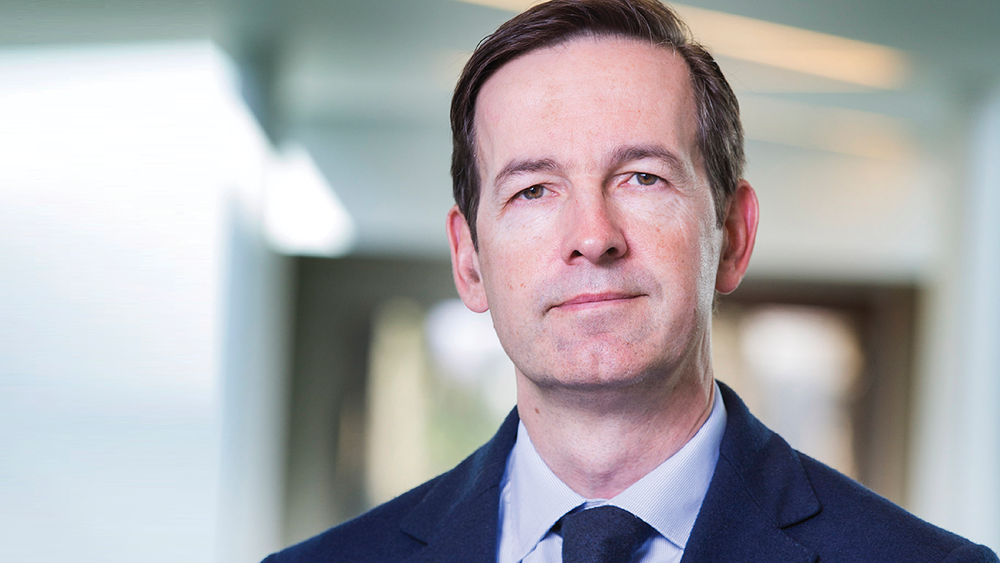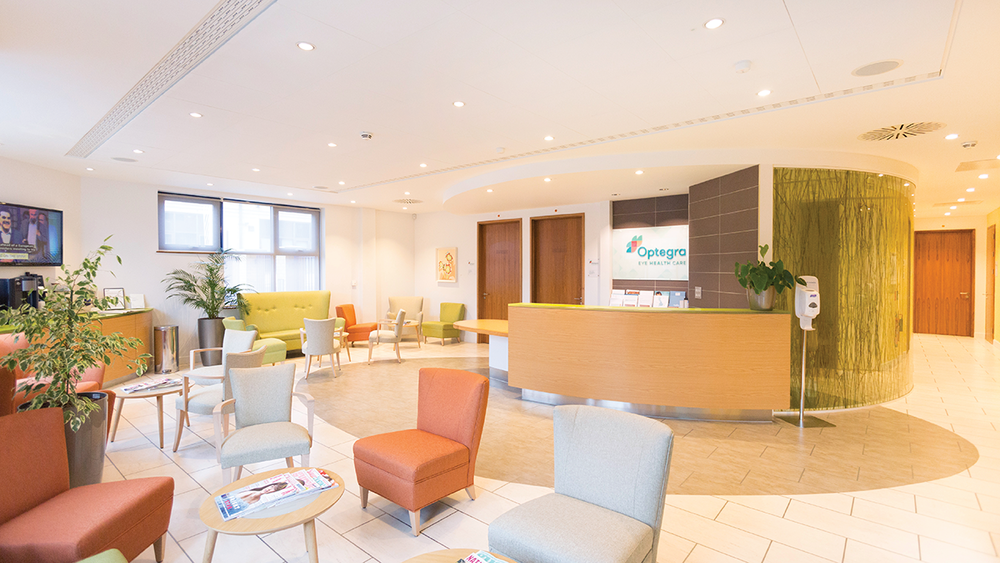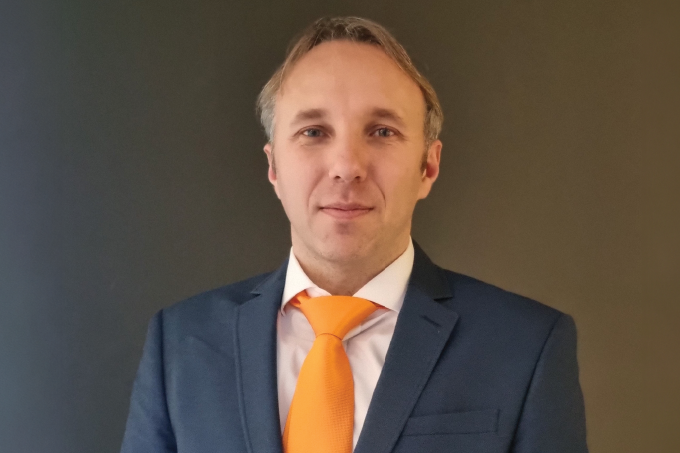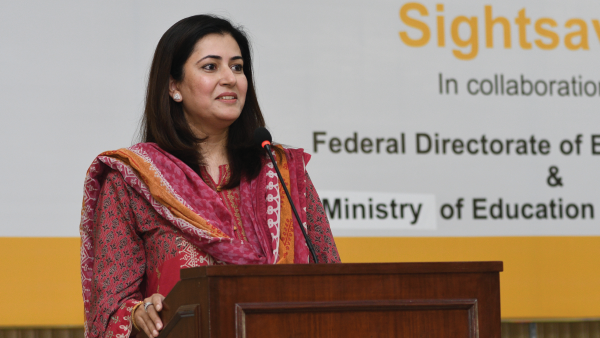Optegra: Streamlining Eye Care
Before COVID-19, Optegra performed 3,000 cataract operations per year; in 2022, that number rose to over 30,000. Concentrating the company’s focus has been a big success for CEO Peter Byloos.
Optegra opened its first eye hospital in the UK (Surrey) in 2008. Its founder, Ned Johnson III – then Chairman and CEO of investment firm Fidelity – had undergone eye surgery that had turned his life around. He wanted others to have the same opportunity, so he set about making high-quality eye surgery “more widely available [...] at a price that was affordable (1).”
Peter Byloos joined Optegra as CEO in 2018, having worked in leading positions at European healthcare and medical technology companies, such as Belgium’s Gimv and Norway’s Handicare Group. Since joining Optegra, he has set the company on a more profitable and streamlined path. It has now treated more than 1.3 million patients in 11 eye hospitals and clinics across England.
Byloos sat down with The New Optometrist to talk about the highlights of his first five years as Optegra CEO, how he steered the company through COVID-19, and his future plans for the UK and Europe.
What were your priorities upon joining Optegra?
In 2018, when I joined, the shareholders wanted to make the company profitable after so many years in business. There was also the question of what Optegra actually wanted to accomplish. Did we still want to be the “A-Z independent eye care provider”? If so, how could we execute and deliver that? My first year was spent with the leadership team, trying to deliver on our promises, while forging good relationships between our consultants and our teams in the UK and Europe. By the second year, I could see we needed a more streamlined strategy. Essentially, my solution was: “Let’s focus on a few key treatments and deliver them exceptionally well.”
So, now our vision is really clear. It’s about elective, high-volume surgery that is better performed in an outpatient clinic environment rather than in a complex hospital situation.
How COVID-19 collide or interact with your strategic vision?
COVID-19 came just after we had decided to streamline our services. Before COVID, we did fewer than 3,000 cataract operations per year; in 2022, we did more than 30,000. In 2023, we are planning to do more than 50,000 cataract operations just in the UK.
When the pandemic struck we had to close our facilities, except for a handful dedicated to NHS emergency care. The timing was such that it really accelerated the investment in digital that we needed to standardize our pathways. Instead of putting everybody on furlough, in that first COVID lockdown period we used the extra time we had to focus our efforts on developing those digital and virtual pathways. For example, we began to let patients do pre-op assessments with nurses and healthcare clinicians by phone.
Another COVID development was that we started hosting webinars. In the first year, we hosted around 34, which, at first, drew about 300–400 attendees but soon went up to as many as 700. The digital acceleration brought about by COVID really helped drive our webinar program. Of course, it also helped that our consultants had free time and optometrists weren’t doing in-practice appointments. Now, we’re finally going back to in-person open days with optoms, but we continue to do around 12 large webinars on specific therapies each year, which offer CPD points.
Your expansion in England continues apace, but how do the different optometry landscapes in Wales, Scotland, and Northern Ireland affect your UK plans overall?
In Scotland, the government has been clear that it wants to address the cataract market preferably within the NHS, so it is less open to private providers. But we are looking into Wales and Northern Ireland. In Wales, the demographics are different from England; the population is more widespread, so you need to think about transportation options. And Northern Ireland has different challenges again – perhaps the biggest challenge is finding young consultant surgeons that want to leave the NHS and do high-volume surgery.
There are certainly under-served areas, where the waiting list for cataract surgery is still very long. And even in those areas where cataract patients are seen within the 26-week limit set by the NHS, they don’t want to travel more than 30–40 minutes to get that treatment. We have recently opened NHS Optegra clinics in Newcastle, Maidstone, and Uttoxeter and are planning our Brighton launch in April this year.
How is your expansion into Eastern Europe evolving?
These markets are more sophisticated and advanced than people think. The Czech Republic, for example, has probably the highest penetration rate on cataract surgery per capita in Europe. Optegra is now in a strong leadership position in both the Czech Republic and Poland. We caused a bit of an upset to the Czech model by offering private care with a publicly-funded element to it; in Poland, we’re developing a more public offering. We’ve also just established a presence in Slovakia. And we’re closing a deal with Central Europe’s largest private equity firm, MidEuropa, which owns some of the eye clinics in Romania.
What are your proudest achievements at Optegra so far?
There are three that stand out. The first is how we successfully shifted our strategy from exclusively private and private elective surgery towards a mix of private and publicly-funded surgery. I’m very proud that we’ve achieved this balance of self-pay and NHS patients, which helps to lower waiting times and reduce the burden on NHS secondary care.
The second is how we’ve grown our relationship with consultants, who are now much more involved; they spend time with our nurses and optometrists on a daily basis. By creating that trust between senior consultants and our management team, we’ve been able to work together very successfully.
The third is how the company has been boosted financially. After a period of investment, we are a dynamic, growing business; we’re committed to making a profit – which isn’t a dirty word for us – so that we can invest in expansion, new technology, offer better services, and basically create our own destiny and be self-sufficient.
In such a high-pressure role, how do you let off steam?
I like to restore classic cars. I’ve worked on many, but my favorite is an Alfa Romeo from the 1960s. At one stage I sold it, but then I bought it back. (Good job too, because my wife and I thoroughly enjoy using it to go on long trips once or twice a year!) Old cars are high maintenance, but they are straightforward. Working on them allows me to switch off from time to time and focus on simple problems!
Reference
Optegra, The Optegra Story (company brochure), 2022.
The New Optometrist Newsletter
Permission Statement
By opting-in, you agree to receive email communications from The New Optometrist. You will stay up-to-date with optometry content, news, events and sponsors information.
You can view our privacy policy here
Most Popular
Sign up to The New Optometrist Updates
Permission Statement
By opting-in, you agree to receive email communications from The New Optometrist. You will stay up-to-date with optometry content, news, events and sponsors information.
You can view our privacy policy here
Sign up to The New Optometrist Updates
Permission Statement
By opting-in, you agree to receive email communications from The New Optometrist. You will stay up-to-date with optometry content, news, events and sponsors information.
You can view our privacy policy here









